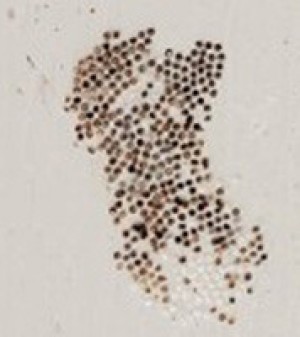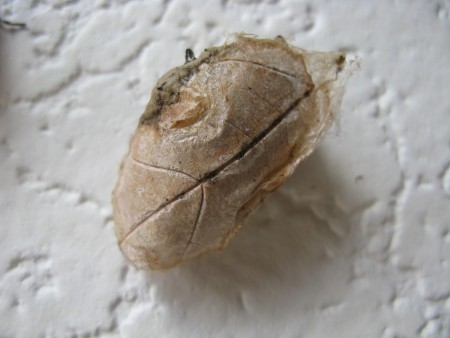 Any thoughts on species of these egg pods attached to siding on back porch in North Carolina?
Any thoughts on species of these egg pods attached to siding on back porch in North Carolina?
I think they are moth eggs.
www.dreamstime.com/
Many moths lay their eggs on the underside of a leaf because they want their larvae begin eating it when they hatch, but moths tend to lay their eggs on whatever surface.
These look like moth fly larvae/moth eggs, and this is about the time of year they start laying eggs. Moths like light-colored surfaces, but will lay their eggs on almost any flat surface; even sidewalks.
www.google.com/

Moth eggs
There are approximately 160,000 species of moths in the world and about 11,000 moth species are native to North America.
A moths life cycle starts when the female moth lays eggs, after a few days, larvae or caterpillars hatch, and they voraciously gorge on plant matter to increase body size, then during the pupal stage, the moth caterpillar metamorphoses into a moth. leafyplace.com/
The process moths use to build their nests will many times include strong acids and other chemicals that can react with vinyl. This reaction will many times cause permanent discoloration and in some cases, damage.
Use an organic option - NBS, it won't kill anything, but will help repel insects for 6-12 months. This product is made with essential plant oils and commonly mixed with stain or paint and then applied to homes. It can also be sprayed onto these same surfaces.
Ask a QuestionHere are the questions asked by community members. Read on to see the answers provided by the ThriftyFun community or ask a new question.
I submitted a segmented egg casing or cocoon for identification a few weeks ago. The general consensus was that it is a moth. Thanks to everyone who responded.
Now I have a couple of others -- not segmented this time. They almost look like a leaf was used to form the cocoon. The size is about 2 inches long and 1 inch wide. They were found on the ground in south central PA. Any thoughts?

This does not (to me) look insect related. This looks like a seed pod from a plant. We get these--I am in western PA. They look like the seed pods from our day lily plants.
We are bad from taking them out when they stop blooming and eventually they form things that look like your photo when they are done. I know they are bulb flowers so these are (if I am remembering my 6th grade science right) it would be a seed that is the pre-bulb???
Since was not my strong point, sorry. If you google images for day lily seeds, what I see in my yard looks like what this is, which looks a lot like this.
Penn State has a great home extension office. Maybe show it to them. A link to the site is: www.psu.edu/
Post back what you learn! They probably are not open during this crisis... not sure...but you could try!
Can anyone identify this? It is about 2-1/4 inches long and 3/4 inch wide. It was found on the ground in South-Central PA. It may have originally been hanging in a tree. That is only a guess based on the fact that there is a small protrusion at one end that could have been an attachment to a tree branch.
I do not know if it is or is not an egg casing. Possibly someone with more knowledge of the subject can advise on that.
There are only a few insects that use a shell covering like this to protect them during the pupa stage. I would guess this is from a moth because butterflies don't use cocoons like this they are more soft and silky.
Please help identify the insect pod on side of tree.

I don't think that's an insect pod, I think its some kind of fungus growing on the tree. The way to check, is to cut or break it loose and cut it open. It may be very firm, as the fungi I've seen like this become quite hard....almost like the wood itself. If hesitant to do this, wear gloves. I think it is this fungi:
www.first-nature.com/
en.wikipedia.org/
If you look at the links above and agree this is what is on your tree, post back here. Good luck.
During quarantine I've been very busy in my garden. Because if this, I'm now raising ladybug larvae because I found their eggs in a rose I was trimming. But, now I've found this cocoon on a dying bush.
I'm not sure it's viable or beneficial. I don't see any exit holes. I'd love to know what kind of creature is inside. I live near Sacramento, CA.
Thank you!
I believe it is a praying mantis egg case.
This indeed looks like a Praying Mantis Egg sac. Often praying are sought after for there nest to be sold to collectors.
My 2 guesses)
(1). A Hummingbird Mouth
(2) Cream colored Caterpillar/ASP
Definitely does not look like praying mantis egg sac; Ive seen those and also it doesnt look like them when you google praying mantis egg sac:
I was hoping to find the answer to your question because I seem to have the same sac on my wood fence.. I live in Indiana.